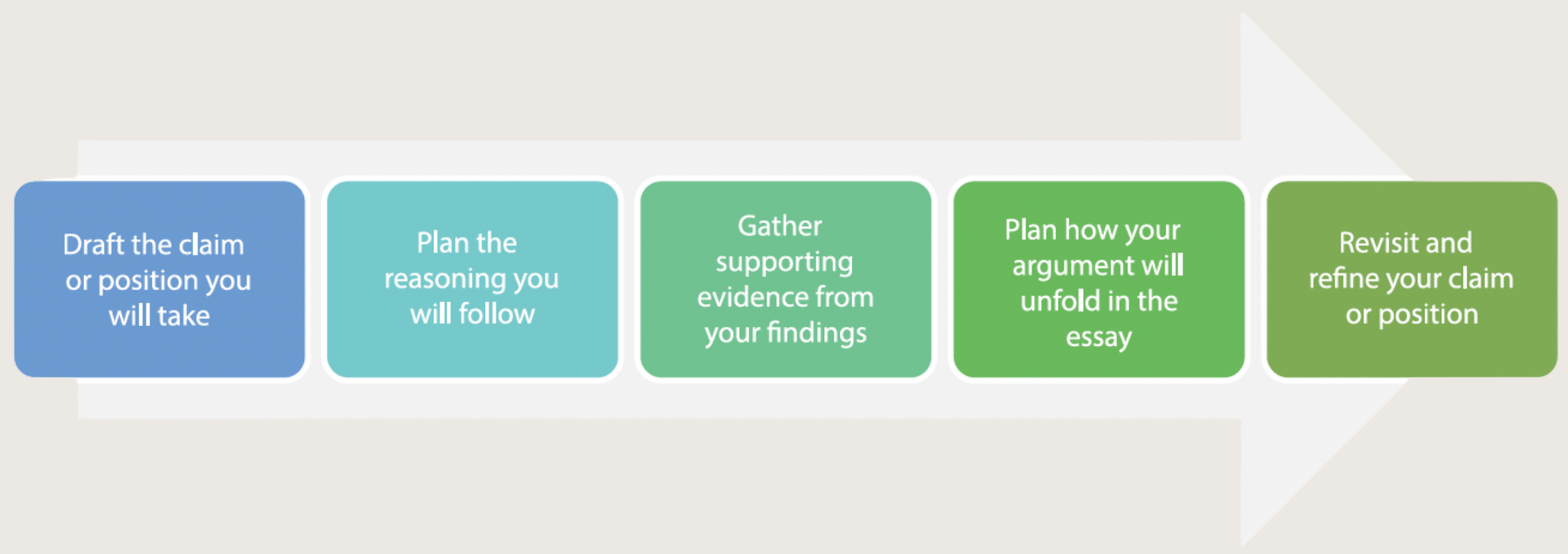Compile and organize information
- Sort, filter and organize information and data into manageable amounts.
- Set aside peripheral material but keep it in mind in case the research question changes.
Analyse, interpret, evaluate and synthesize the findings
- Always refer back to the research question.

- Analyse information from secondary sources.
- Interpret and analyse data from primary research (if those were used).
- Organize, combine, link and synthesize information to form the body of the essay.
- Ensure that your line of argument is supported by evidence from the research.
You can structure your writing with signposts. Use PEELL or a similar technique to structure the points you make throughout your essay, as follows.
- P—State the Point you are making.
- E—Provide Evidence (e.g. a quotation, paraphrase or summary, data, other information) to support the point.
- E—Explain how the evidence supports the point.
- L—Link the point to your research question.
- L—Link a point to the next point in your argument; alternatively, start the next point with a link to the previous point.
The Argument Development Model
An important feature of your extended essay is the argument you present to the reader, an argument that clearly stems from your research question. You may want to amend the argument as you move forward with the writing process. However, in the early stages, and perhaps when reviewing your progress, consider the model in figure 12 to shape your thinking and planning.

Write the conclusion
- Ensure that the conclusion relates to the research question and is logically linked to your line of argument in the body of the essay.
- Synthesize rather than merely summarize.
- Consider broader issues; if appropriate, suggest other questions to research but do not introduce new ideas.
Review and edit the final essay
- Edit and re-edit your essay if needed.
- Feel confident that the essay “flows”: arguments make sense, conclusions are well founded and the research question has been successfully addressed.
- Ensure that the essay aligns with any structural conventions relevant to the subject areas you are working in.
- Ensure that citation and referencing are complete and accurate.
EE Guide pg 82
EE Support Materials pg 38-39



